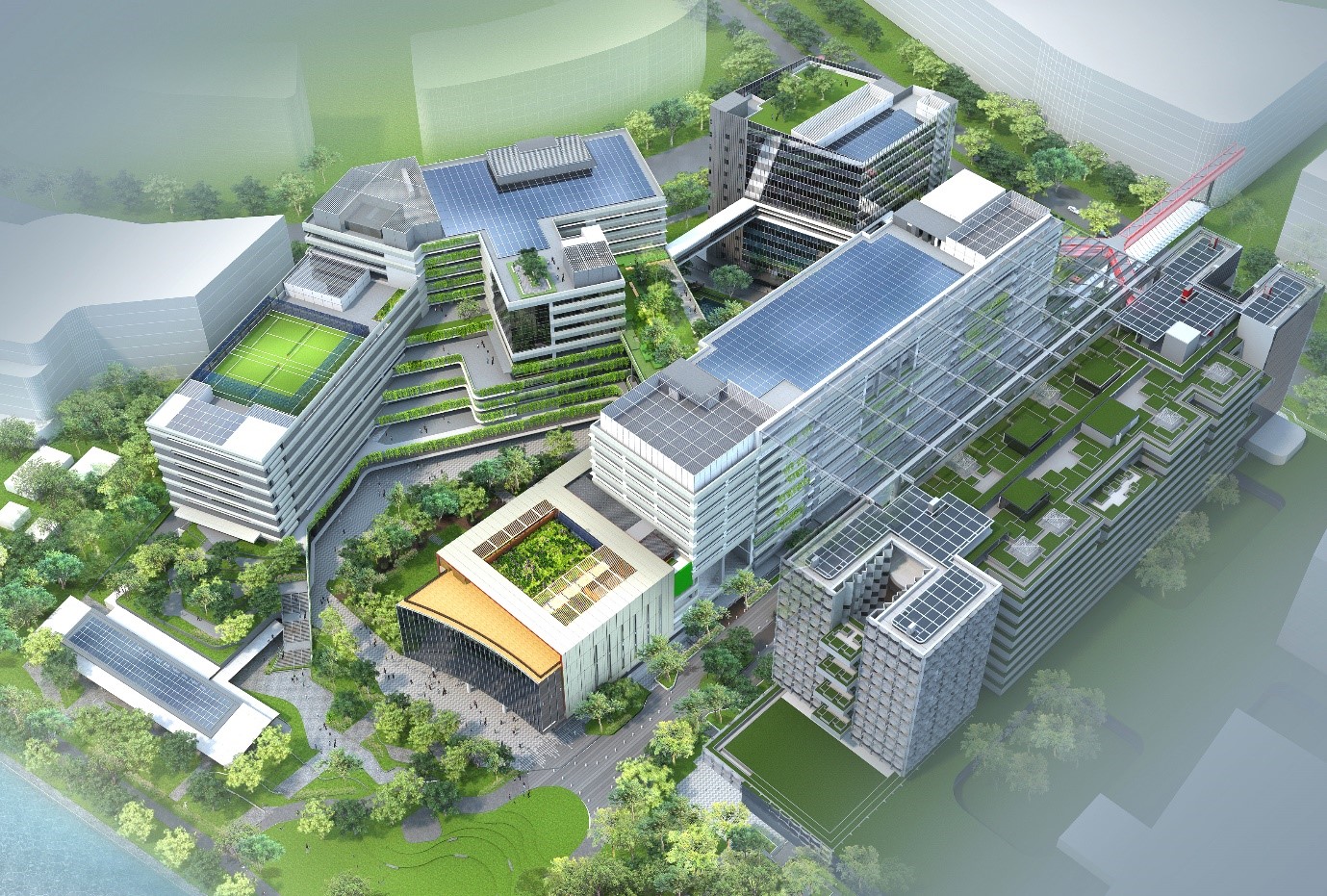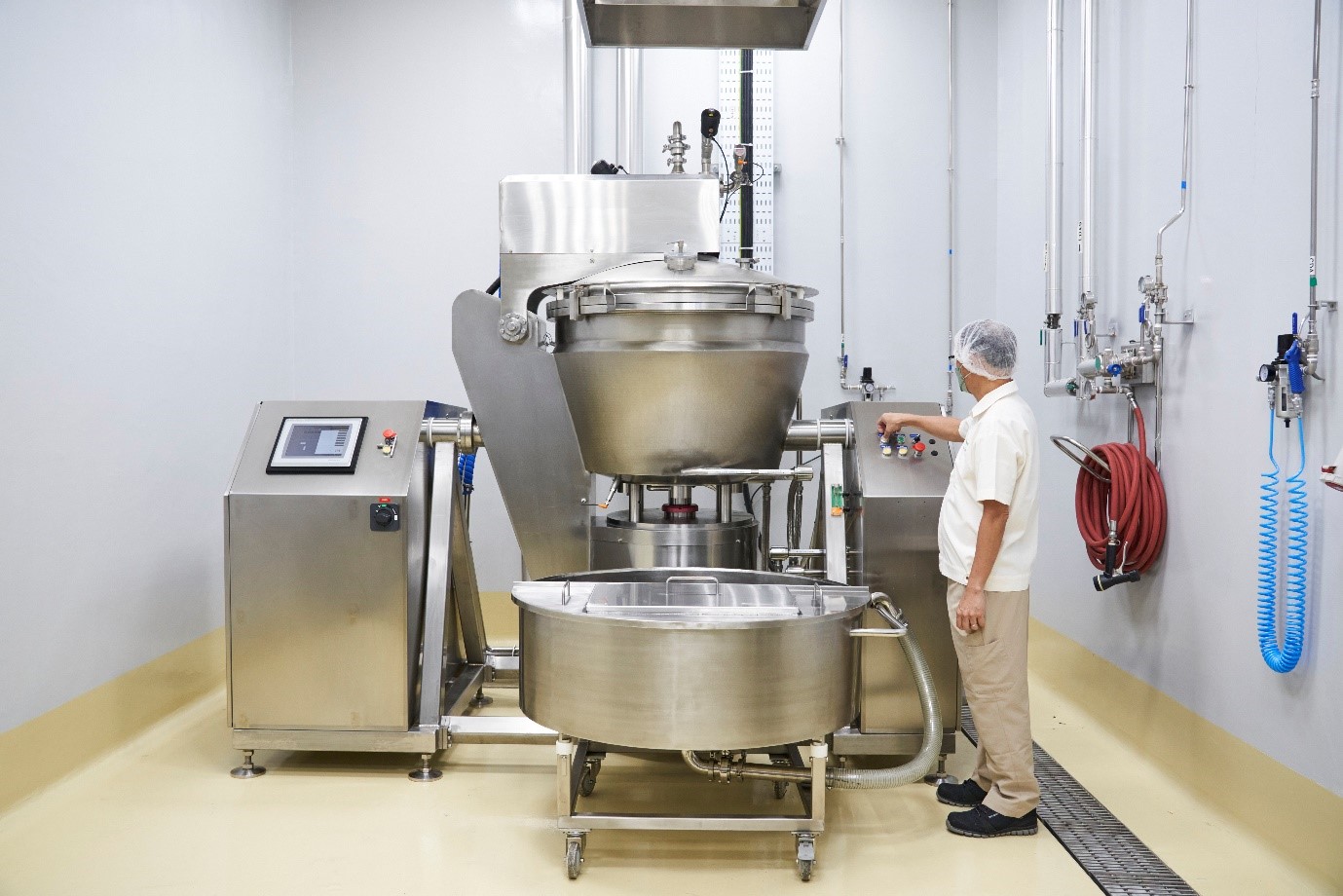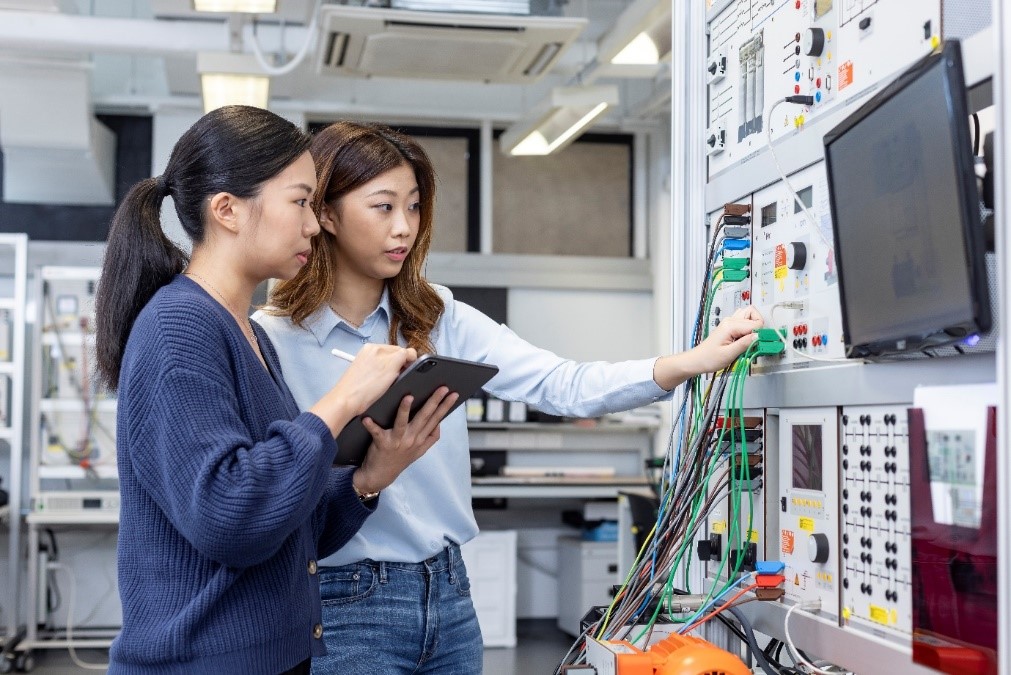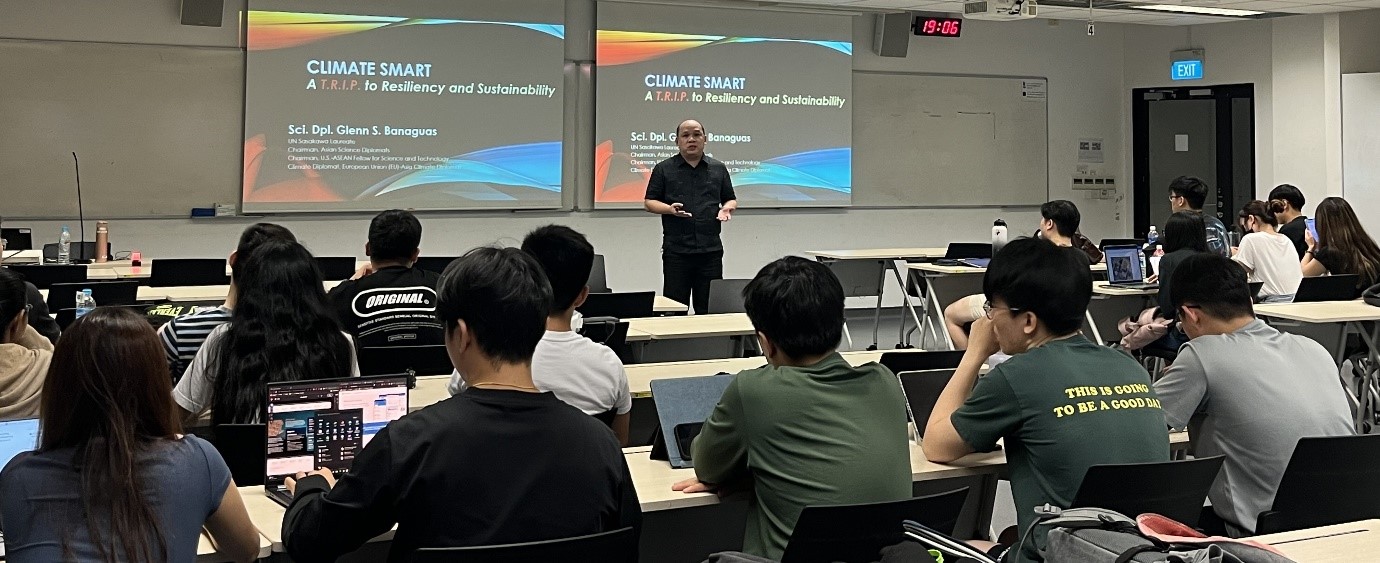Singapore Institute of Technology
“The decisions we make today shape our future. That is why sustainability is at the forefront of SIT’s decision-making, where we leverage the innovative application of technology towards a better, more sustainable future for all.”
Singapore Institute of Technology
The Singapore Institute of Technology (SIT) is taking steps to integrate innovation and sustainability into its operations, campus, research and development efforts, as well as curriculum to equip students to create a more sustainable future.
Sustainable Campus

An artist's impression of SIT Punggol Campus.
SIT’s Punggol Campus, slated to open in the second half of 2024, has incorporated sustainability into its design and development. Its water management framework and infrastructure aims to capture rainwater from about 40% of the land for non-potable usage, saving about 86,000 cubic metres annually, enough to fill 34 Olympic-size swimming pools. It received the Active Beautiful Clean (ABC) Waters Certified (Gold) Award in 2022 for this innovation.
Punggol Campus will also be home to Southeast Asia’s first Multi-Energy Microgrid (MEMG), a collaborative research venture between SIT and SP Group. The MEMG can integrate electricity from the national grid, renewable sources and energy storage in a unified smart energy network. Approximately 10,000 square metres of photovoltaic (PV) solar panels installed on the campus buildings’ rooftops will provide more than 2,000 MWh of electricity annually, and save energy equivalent to the electricity consumed by 1,000 four-room flats annually.
In addition, SIT takes active steps to reduce use of electricity, water, single-use disposables, and recycles the food waste from its foodcourts. It also aims to promote a culture of sustainability and create a conducive learning and working environment by ensuring the health, safety and well-being of students and staff.
Sustainability Research & Innovation
SIT actively encourages a sustainability approach to the University’s applied research and innovation endeavours. An example is SIT’s collaboration with industry partners to create the Passive Displacement Ventilation (PDV) system. This innovative cooling system utilises natural convection instead of powered fans to cool large spaces. The PDV system reduces resource wastage while enhancing cooling efficiency.
.jpg?sfvrsn=6d74559_1)
The Multi-Purpose Hall (MPH) at the SIT Punggol Campus adopts a Passive Displacement Ventilation model for efficient cooling and uses shading devices on windows extensively to achieve high solar heat reduction.
SIT has also established FoodPlant, Singapore’s first shared facility for small-batch food production, to support innovation in the food manufacturing industry. The facility offers industry partners affordable access to various equipment and industrial expertise, incentivising and promoting efforts in sustainable food production.
With these technological integrations and advancements, SIT makes continual efforts to protect and manage intellectual property and innovation generated by the University and its research partnerships.

Companies have access to specialised equipment at FoodPlant. (SIT Photo: Keng Photography/Tan Eng Keng)
Sustainability Talent Development

Students of SIT’s Sustainable Built Environment degree programme at the HVAC Lab at SIT@Dover. (SIT Photo: Andrew A.)
To create a sustainability-oriented workforce, SIT is also embedding sustainability content across various education programmes. Undergraduate students in SIT and joint degree programmes are required to take a micro-module on key sustainability concepts, while certain university-wide modules allow students to apply critical sustainability perspectives to real-life projects.
Undergraduates are also given the opportunity to delve deeper and pursue a minor in Environmental Sustainability, while working professionals may choose from a suite of courses for a holistic view of the various aspects of sustainability in the corporate world.

Sci. Dpl. Glenn S. Banaguas, renowned scientist, diplomat, and one of the leading experts on environment, climate change, and disaster risks in Asia, shares his experience on sustainability with students reading the Minor in Environmental Sustainability. (Photo: Yeap Lay Huay)
As SIT continues to impact both its local and wider environment, its academic offerings, applied research and innovation efforts aim to ensure students are well-equipped to build a more sustainable future for Singapore and beyond.
Read more about SIT’s sustainability initiatives: https://www.singaporetech.edu.sg/sustainability.